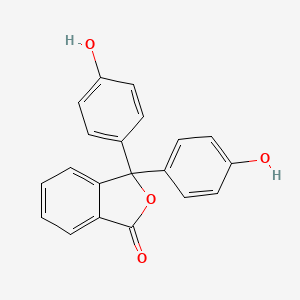In typical soda-lime-silica glass the former is silica Silicon dioxide in the form of sand. The term lead crystal is technically not an accurate term to describe lead glass.
Lead glass contains typically 1840 lead oxide while modern lead crystal historically also known as flint glass due to the original silica source contains a minimum of 24 PbO.

Colored glass chemical formula. The crystalline form of this mineral is quartz. White 100 polyester dyed at 200. The vast majority of the glass we use on a daily basis is soda-lime glass.
The recipe for producing colored glass usually involves the addition of a metal to the glass. 01122011 There is no single chemical composition that characterizes all glass. Sodium silicate is a generic name for chemical compounds with the formula Na 2xSi yO 2yx or x.
Lead glass commonly called crystal is a variety of glass in which lead replaces the calcium content of a typical potash glass. 03072019 Heres a fun color change project in which a solution is poured from a water glass into a wine glass tumbler and beer glass. Yellow glass is usually made with cadmium sulfide and red or pink glass usually contains selenium although some ruby-colored glass has had gold added.
In 1735 Swedish chemist Georg Brandt 1694-1768 analyzed a dark blue pigment found in copper ore. The coloring of glass is not a simple subject. Borosilicate glasses are known for having very low coefficients of thermal expansion 3.
There are actually different types of glass for different purposes. The colors shown in this guide are based on the following standards. Schott research and development summarized their physical and technical glass properties 15 MB.
Humans have been using compounds of cobalt since at least 1400 BC. Fluxes lower the temperature at which the formers will melt. 15072019 Silicon Dioxide and Glass.
Sodium silicate is also the. Rit All-Purpose Dye. Borosilicate glass is a type of glass with silica and boron trioxide as the main glass-forming constituents.
This is primarily a mixture of silicon dioxide calcium oxide lime and sodium oxide soda. The table below lists some of the coloring agents of glass and the colors that they produce. Formers make up the largest percentage of the mixture to be melted.
These compounds are generally colorless transparent solids or white powders and soluble in water in various amounts. This is the type of glass you find in windows and drinking glasses. 03032015 Before discussing the cause of colour in more depth its worth discussing the chemical composition of glass itself.
10 6 K 1 at 20 C making them more resistant to thermal shock than any other common glass. F for 30 minutes Rit DyeMore Synthetic Fiber Dye. Pre-treating the glassware causes the solution to change to appear to go from water to wine to milk to beer.
06052021 In making sheet glass it is customary to use 6 percent of lime and 4 percent of magnesia magnesium oxide or MgO and in bottle glass about 2 percent alumina aluminum oxide or Al 2 O 3 is often present. White 100 cotton dyed at 140. Glass Properties on GlobalSpec GlassOnWeb MatWeb Glass Global A general overview about glass art history science literature social studies and technology is available at the Corning Museum of Glass view as PDF 18 MB.
This is often accomplished by adding some powdered oxide sulfide or other compound of that metal to the glass while it is molten. Glass Composition Glass Types. Y such as sodium metasilicate Na 2SiO 3 sodium orthosilicate Na 4SiO 4 and sodium pyrosilicate Na 6Si 2O 7.
Copper for example can produce blue green or opaque red glass. Typical glass contains formers fluxes and stabilizers. Soda Lime Glass also known as Float Glass contains both Sodium and Calcium and is formed by drawing the glass over molten tin baths.
Glass color depends not only on which elements are added but also on the composition of the glass and on whether the furnace used was in an oxidizing or reducing mode. Such glass is subjected to less thermal stress and can withstand temperature differentials. The glass you encounter most often is silicate glass which consists mainly of silica or silicon dioxide SiO 2.
The compounds were used to color glass and glazes blue. The anions are often polymeric. Soda Sodium carbonate and.
Other materials are also added some being put in to assist in refining the glass ie to remove the bubbles left behind in the melting process while others. F for 30 minutes The final color of your project may be lighter or darker depending on the fabric content temperature and time in. The air side facing up is typically flatter and smoother than the tin side.
This set of reactions is perfect for a magic show as well as a chemistry demonstration. When the solid material is non-crystalline it is a glass. Lead glass is often desirable for a variety of uses due to its clarity.

Chemical Composition Of Borosilicate Glass Download Table

Caffeine Chemical Formula On White Background Affiliate Chemical Caffeine Formula Background White A Caffeine Chemical Chemical Formula Caffeine
Glass Chemistry Encyclopedia Structure Reaction Water Uses Elements Metal Property
Phenolphthalein C20h14o4 Pubchem

Chemical Composition Of The Waste Glass And Cement Download Table

Borosilicate Glass An Overview Sciencedirect Topics

Chemical Composition Of The Waste Glass And Cement Download Table




0 comments:
Post a Comment